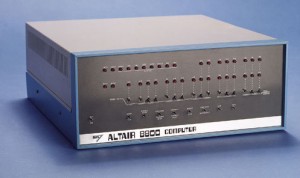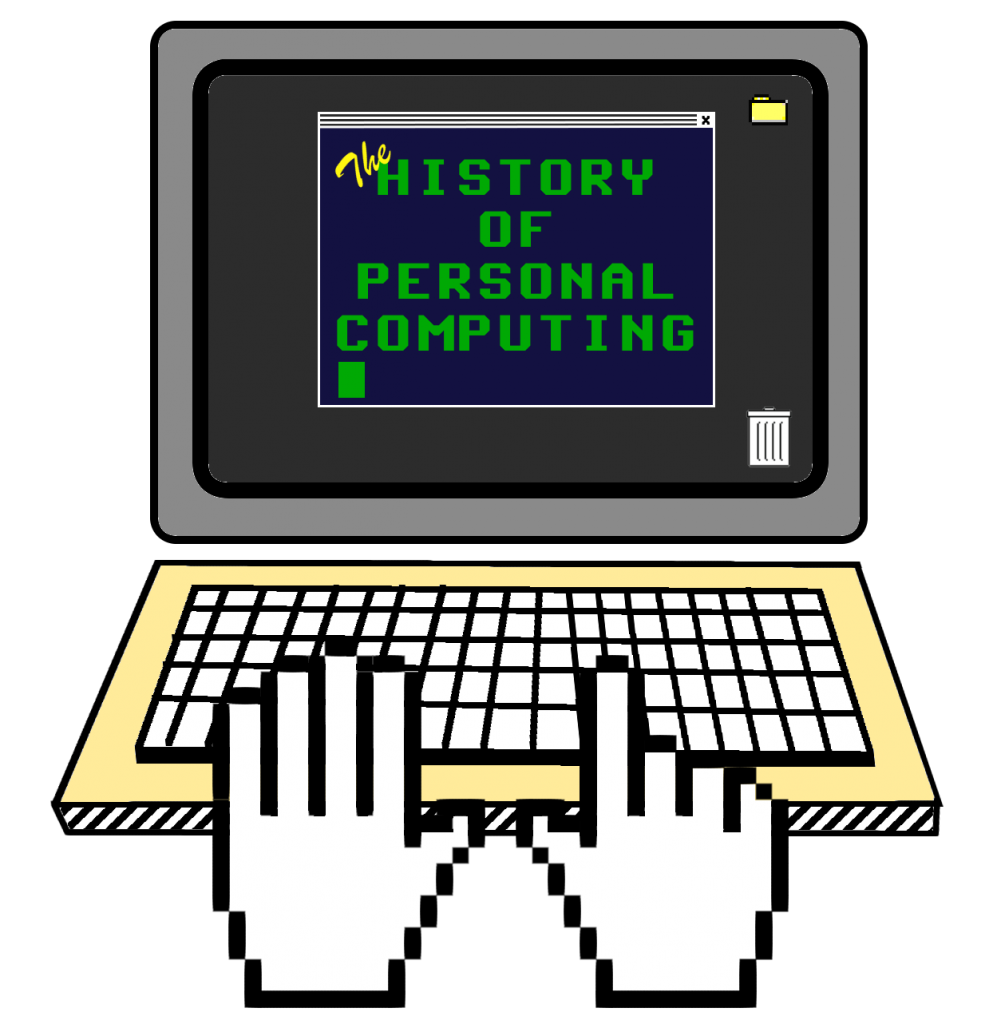Altair 8800
The Altair 8800 from MITS (Micro Instrumentation Telemetry Systems) was the “World’s first personal computer.” That is, the world’s first commercially successful, mass-produced personal computer. It established creator Ed Roberts as the “Father of the microcomputer” and Albuquerque, New Mexico as its birthplace. There were a few other earlier machines available in very limited numbers, but none of them came as a complete kit or fully assembled and tested as the Altair was.
Ed was one of the co-founders of MITS, along with key employee Forrest M. Mims III. The company was originally formed to sell electronic kits for model rockets. Later Ed bought out two other partners when he decided to go into the calculator kit market and they didn’t. By 1973, MITS sold over $1 million in calculators a year, but by mid-1974, competition from the Japanese with cheap calculators had the company in over $300,000 of debt. MITS needed another key product. There was a project rivalry between Radio-Electronics magazine and Popular Electronics, and R-E had published an article on a computer kit called the Intel 8008 processor based “Mark-8.” Ed decided that his company would create a computer based on the more power Intel 8080 and have it ready for a January 1975 issue of PE.
Though being met with a number of hardships during its development, the “Altair 8800” made the deadline for kit publication in PE. One famous related story is how the first prototype was forever lost in October 1974 due to the employee strike and bankruptcy of REA (Railway Express Agency). As planned though, the Altair appeared at newsstands a week before Christmas 1974 on the cover of the January 1975 issue of Popular Electronics. Within a few days, phone calls and orders began pouring in. By February MITS had received 1,000 Altair orders. By August, there had been over 5,000.
Each initial release of the Altair was sold for around $400 each in kit form. People had to build it, and it didn’t always work the first time. Housed inside that large metal case was a microprocessor core called the Intel 8080 microprocessor. At first, very little RAM was installed. Only 256 bytes on a board capable of holding enough RAM for 1024 bytes. 256 bytes did not seem like much, but it was enough to create small programs involving looping calculations, like calculating Fibonacci numbers, for example.
The Altair 8800 exploded on the scene after Popular Electronics debuted it in January 1975. You can find scans of the issue that it appeared in, including the front cover and full article, on the South West Technical Products, Corp. website: http://www.swtpc.com/mholley/PopularElectronics/Jan1975/PE_Jan1975.htm. After the Altair 8800 was announced, the waiting list was very long. People literally pulled what we experience today as an “Apple Launch” type of action where they parked and camped in front of MITS to await the manufacture of their new computer.
Programming the Altair 8800 in its native capacity was horrendously tedious. Programs were hand compiled, meaning you needed to reference the Intel 8080 command set and determine the flow and branching of the program on your own. There were no high level compilers to help you. After you hand compiled your program, you needed to set a bunch of switches to memory addresses and the 8-bit data you wanted to enter into that memory address, then you pressed a switch to “write” that value into memory. Repeat until the entire program is entered. Your output was an 8-bit LED display. When you ran your program, it basically returned a single number from 0 to 255 at any moment, in binary, across eight single LED indicators. When you turned the power off, you lost your program.
Before long, input devices like paper and magnetic tape were used to load data and operating systems, and terminals or CRTs were used for output. These turned the Altair into a formidable computer, resembling the form factor we know and use today. Even with these “conveniences” though, the user was required to first hand load a bootstrap program with the front panel switches that taught the Altair how to read the data from the paper or magnetic tape. Here is a video demonstrating such a process:


